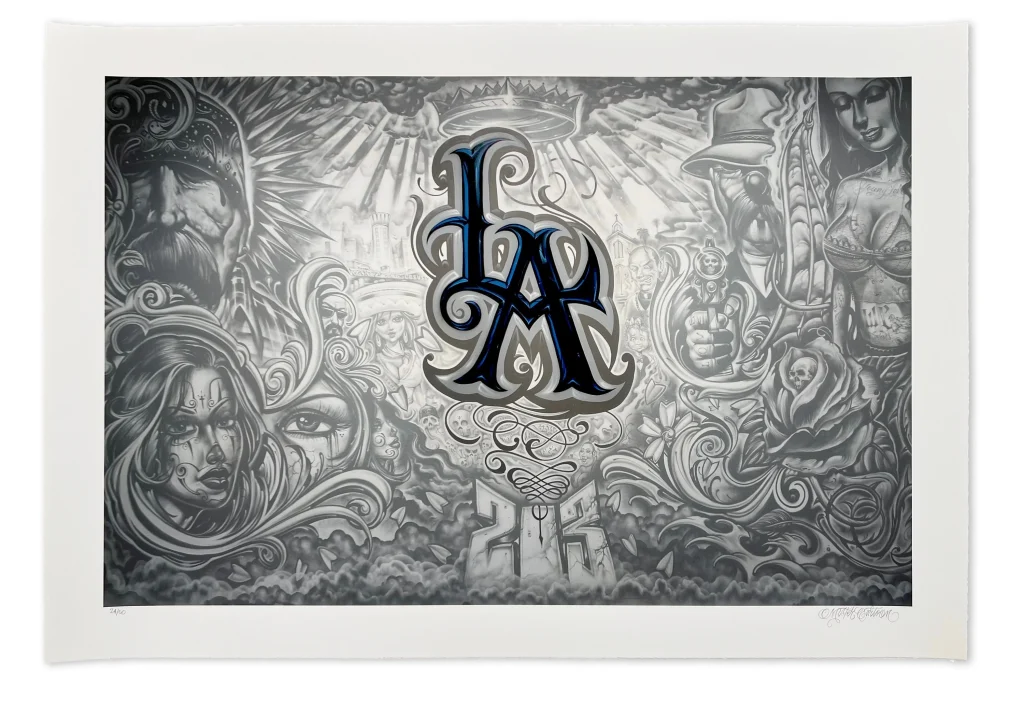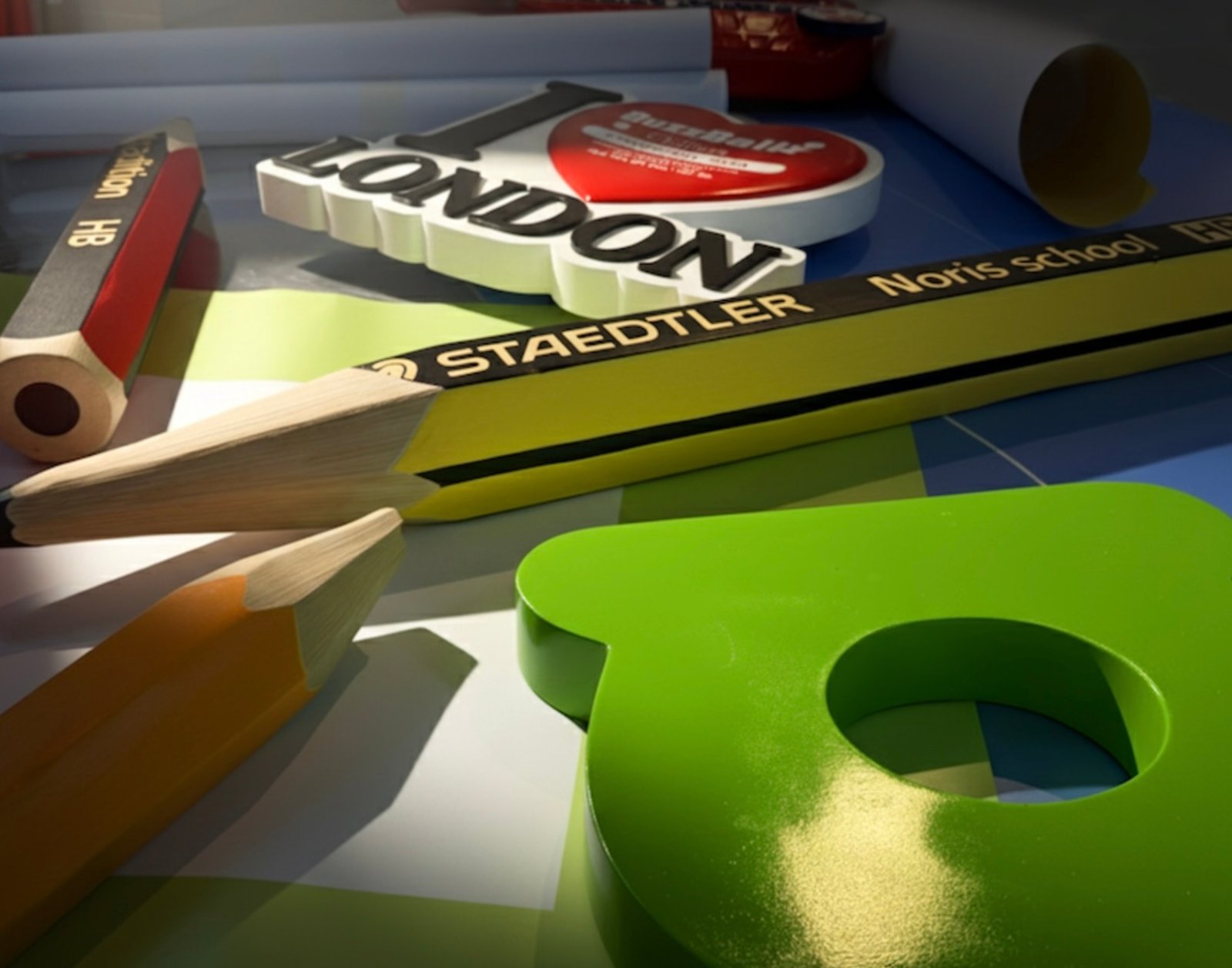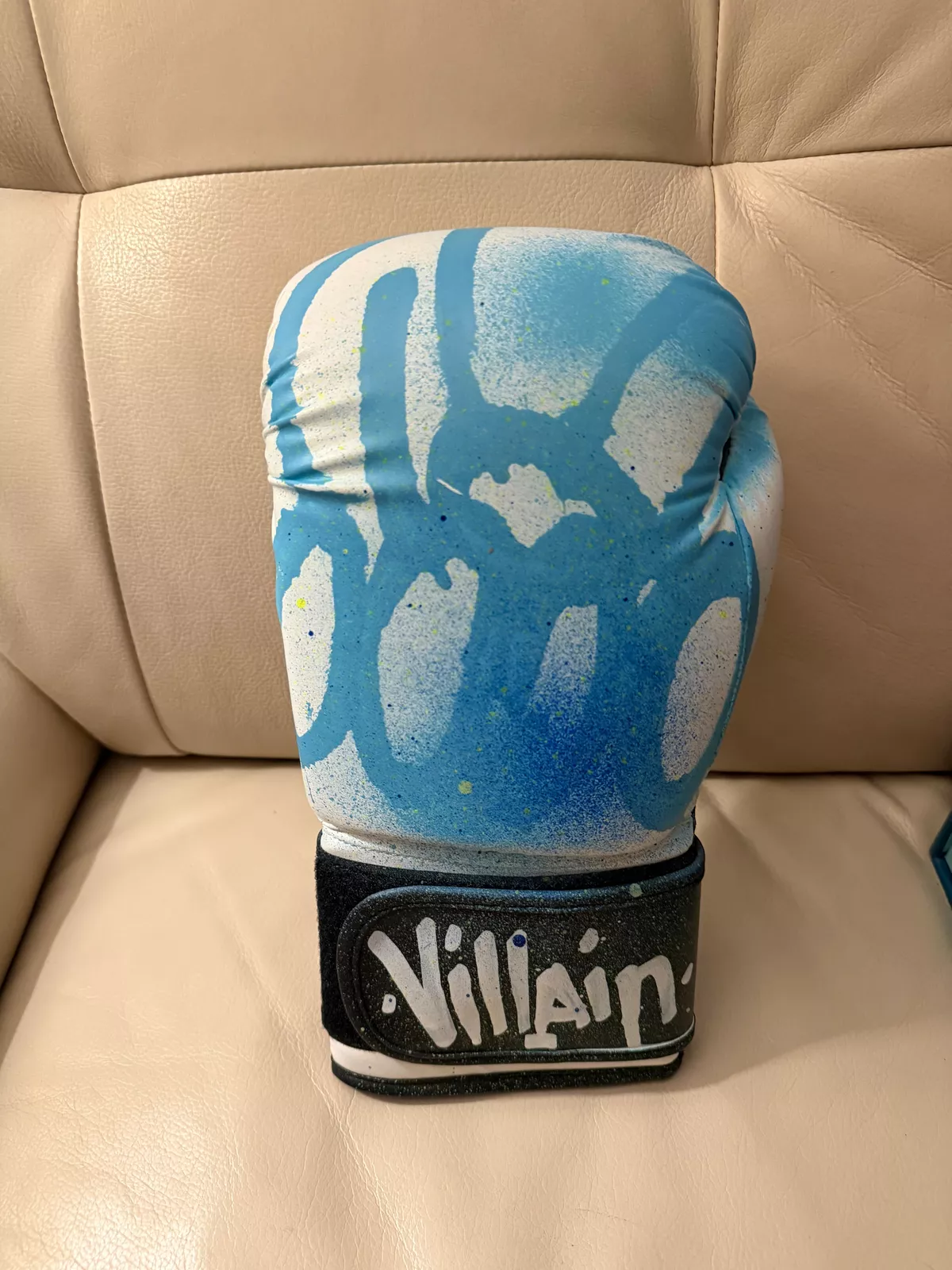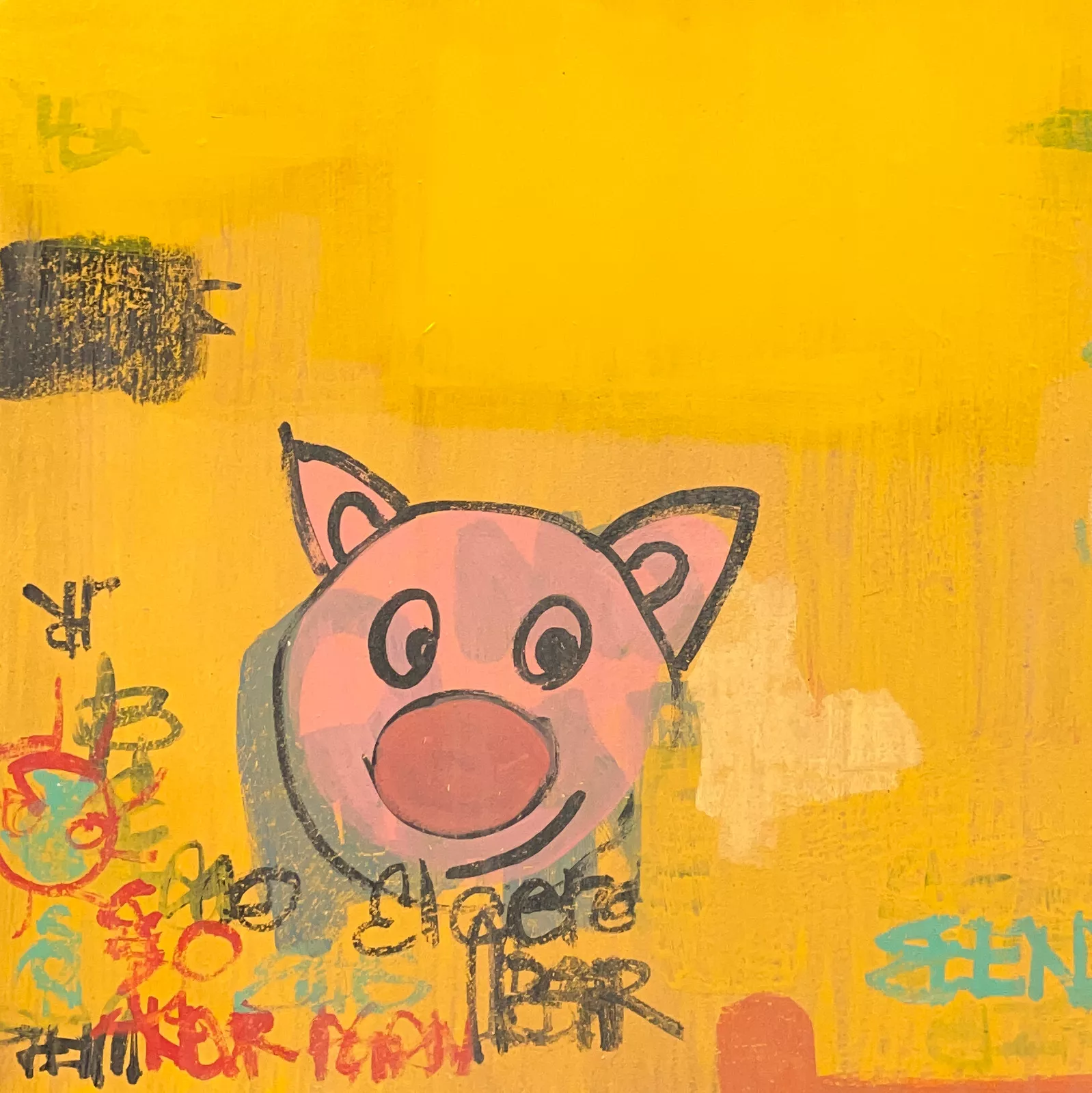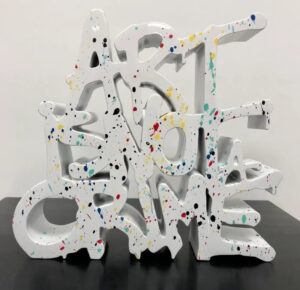For many artists, Los Angeles is a backdrop — palm trees and neon sunsets, the Hollywood sign peeking out like a quiet promise. But for Mark Machado, known globally as Mister Cartoon, LA is not just a background; it is a living, breathing entity. It pulses with every stroke of his airbrush, every line of his tattoo gun, every detail of his lowrider murals.
When you first see his monumental mural, recently exhibited in a major fine art institution, you feel the gravitational pull of a lifetime devoted to honoring LA. Created entirely with spray paint and airbrush — his trusted, lifelong tools — this piece is a sweeping testament to a city as beautiful as it is chaotic.
It is rare to see work so deeply rooted in the streets transported into a formal gallery space. The institutional walls almost strain to contain the energy. For decades, art insiders insisted that “high art” and “street art” occupy different universes, but Cartoon obliterates that boundary with one powerful piece.
A Story Told in Greyscale
The mural is a monochrome epic, reminiscent of the black-and-grey tattoos that made Cartoon a household name among hip-hop artists, athletes, and Hollywood elites. In the center, a bold “LA” emblem stands as the visual anchor — an unmistakable nod to the Dodgers, to Spanish pride, to neighborhood loyalty. It’s rendered in rich blue and outlined with gradient shading, popping against the surrounding grey clouds and spectral figures.
Around it swirl intricate portraits: a woman’s face adorned with fine line-work and ornamental curls; an eye shedding tears beneath storm clouds; a stoic, bearded man beneath radiant beams like a modern-day saint; and a defiant figure brandishing a revolver in homage to the city’s raw edges.
Roses bloom ominously in corners, skulls peer out from shaded petals, and gothic script intertwines with baroque flourishes. The piece is both a love letter and a war diary — a catalog of LA’s dualities.
Rooted in the Streets
Mister Cartoon’s journey started in South LA, where the lines between graffiti, lowrider culture, and tattoo art blurred into one universal language. In the 1980s and early ’90s, he tagged walls and buses, leaving his name where he could, building a legend among local crews. His style, rooted in Chicano black-and-grey fine line tattooing, was steeped in narrative and symbolism, echoing prison tattoo traditions while elevating them into personal stories.
By the time he started tattooing professionally in the 1990s, his work already carried the weight of street respect. His tattoo clients became a who’s-who of cultural heavyweights: Eminem, Dr. Dre, Snoop Dogg, Kobe Bryant, Beyoncé. His murals adorned lowriders, trucks, storefronts — each piece a portable shrine to LA life.
His famous connections with brands like Nike, Vans, and Hyundai introduced his artistry to global audiences, but no matter how far he traveled, he brought LA with him — in every airbrush stroke, every script letter.
From Lowriders to Fine Art Institutions
The mural showcased here, recently landing on the cover of LA Weekly, signifies a remarkable moment: the street finally claiming its seat inside the halls of fine art. Lowriders, often dismissed as mere “hobby cars” or worse, symbols of violence and gang culture, roll into the institution beside the mural, their candy-colored paint jobs shimmering under museum lights.
Cartoon’s lowriders are not simply vehicles — they are mobile canvases. Layer after layer of metallic flake, clear coat, pinstriping, and mural work transform each car into a rolling archive of stories. Flames, Aztec gods, Aztec warriors, laughing clowns, Madonnas — each motif a chapter from the Chicano visual tradition.
By exhibiting these cars alongside his mural, Cartoon defies the art world’s elitist separation of “fine” and “folk.” In his universe, a tattoo, a car hood, and a museum canvas hold equal potential to tell stories and move souls.
The Soul of the City
Los Angeles has always been a city of dreamers and outsiders — immigrants, transplants, hustlers, artists. Cartoon’s mural is not a sanitized postcard version of LA. There are no palm tree silhouettes against candy pink skies. Instead, it shows a different truth: a city of pain and joy, struggle and celebration.
A woman’s tear-streaked face alludes to loss and resilience in the community. The fierce eye above the swirling script speaks to constant vigilance and survival. The man in the fedora holding a revolver confronts the reality of street life, where danger is never far. Meanwhile, ethereal rays of light suggest hope, redemption, and rebirth.
At the base of the mural, the “213” area code rises from clouds like a monument. It is a tribute to the area’s central place in LA identity — a numeric symbol instantly recognizable to those who call the city home.
A Style Forged in Tradition
Cartoon’s signature style owes much to the Chicano tattoo tradition pioneered in California prisons and neighborhoods. The fine lines, the shading techniques, the emphasis on script — each component pays homage to those early innovators who transformed the human body into a sacred text.
Yet, Cartoon’s art pushes past simple replication. He elevates these traditions with baroque flourishes, unexpected elements, and a master’s control of gradation and scale. His airbrush technique, perfected over decades, produces delicate transitions from light to shadow, lending a lifelike, almost ghostly presence to his figures.
Community and Legacy
Beyond his technical mastery, Cartoon’s greatest contribution is perhaps his unwavering dedication to community storytelling. His art doesn’t just depict LA; it listens to it, mourns with it, and celebrates it.
By bringing his work into major art spaces, he also opens doors for the next generation of artists who feel caught between street culture and gallery validation. He proves that the neighborhood kid with a spray can can one day have a wall in a museum — without compromising authenticity.
A Living Archive
Today, Mister Cartoon’s mural stands as both a snapshot and a prophecy. It documents the present moment but also suggests a future where stories from marginalized communities aren’t forced to stay on the margins.
It invites viewers to look deeper: into the curls of hair on a woman’s portrait, into the glint in the eye of a crying face, into the folds of a rose concealing a skull. Each corner of the mural brims with smaller narratives, each requiring careful attention.
For many visitors, standing before it feels like being on a neighborhood block at dusk — kids pedaling by on bikes, elders on stoops trading stories, music drifting from passing lowriders. It is an immersive, emotional experience that transcends static observation.
On the Cover and Beyond
Landing on the cover of LA Weekly symbolizes more than just press recognition; it is an affirmation. A city’s alternative weekly, historically committed to sub-cultures and underground movements, recognizes that Cartoon’s work isn’t just art — it’s the city’s mirror.
Collectors, curators, and critics alike are taking note. The mural and accompanying works have sparked conversations about authenticity, representation, and the redefinition of American art.
A New Chapter
As Mister Cartoon continues to bridge worlds — lowrider garages, tattoo studios, and museum walls — he challenges both audiences and institutions to expand their definitions of art.
His next projects reportedly include a documentary film chronicling his journey, more mergers with major fashion and auto brands, and mentorship programs for young artists across Los Angeles. Through each endeavor, the message remains clear: no matter where his work travels, it carries the streets of LA in its pulse.
A City on the Wall
In Mister Cartoon’s mural, Los Angeles is not flattened into a single narrative. It is sprawling, layered, and alive — just as complex as the artist himself. From the fine lines of a woman’s tattooed cheek to the shimmering crown above the LA emblem, each detail reflects the city’s many faces.
Standing before it, viewers are invited into an intimate dialogue: a confrontation with beauty and pain, pride and loss, past and future. In a time when authenticity is both demanded and commodified, Cartoon offers a genuine vision — one born not in boardrooms or design labs, but in back alleys, car clubs, and barbershop conversations.
For many artists, murals are simply walls. For Mister Cartoon, they are canvases for collective memory, sacred spaces to inscribe the soul of a city. And as this latest work proves, LA isn’t just a place he lives — it is a force he embodies.
No comments yet.

